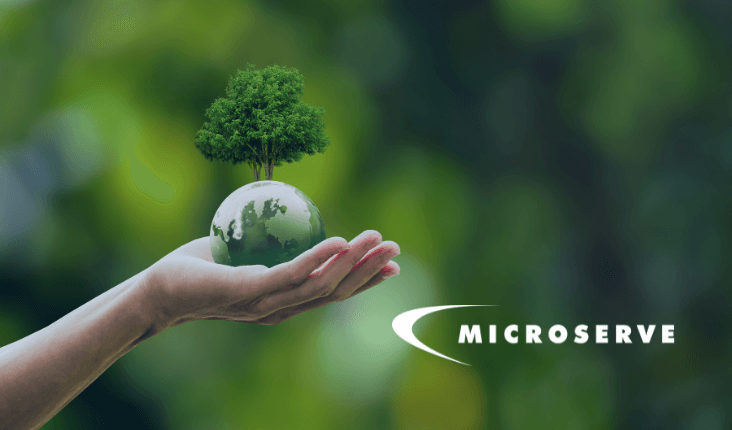Welcome to the second installment of our three-part blog series focusing on the importance of sustainability and environmental consciousness in the business world. In this post, we will delve deeper into the concept of the Triple Bottom Line (TBL) and its significance in fostering sustainable practices. With a specific focus on the environmental dimension of TBL, we will present evidence-based strategies for businesses to reduce their ecological footprint and contribute positively to the environment.
The Triple Bottom Line (TBL) Framework
The Triple Bottom Line (TBL) is a powerful concept that encourages businesses to consider three dimensions of their performance: social, environmental, and financial. According to research published in the Journal of Business Ethics1, companies that prioritize sustainability, as part of their TBL approach, not only demonstrate higher social and environmental responsibility but also achieve enhanced financial performance over time.
The Social Dimension: Businesses that prioritize the social aspect of TBL often foster employee well-being and engagement, leading to increased productivity and reduced turnover rates. A study by Harvard Business Review2 revealed that companies with strong social performance experienced 72% lower employee turnover.
The Environmental Dimension: The environmental pillar of TBL compels businesses to minimize their ecological footprint. By adopting energy-efficient practices and renewable energy sources, companies can significantly reduce greenhouse gas emissions. For instance, Google achieved a milestone in 2017 by matching 100% of its global electricity consumption with renewable energy purchases3.
The Financial Dimension: Contrary to the perception that sustainability efforts incur higher costs, a study by MSCI4 found that companies with robust environmental, social, and governance (ESG) performance experienced fewer incidents of credit risk and demonstrated better creditworthiness.
Focusing on Environmental Impact
Minimizing environmental impact is a critical aspect of the Triple Bottom Line (TBL) framework. Evidence-based strategies can help businesses achieve sustainability goals and contribute positively to the environment.
- Energy Efficiency: Implementing energy-efficient technologies and practices can significantly reduce greenhouse gas emissions. Research from the International Energy Agency5 indicates that energy efficiency measures have the potential to reduce global CO2 emissions by up to 38% by 2040.
- Sustainable Supply Chain: Companies can reduce their environmental impact by adopting sustainable sourcing practices. A report by CDP6 reveals that businesses with sustainable supply chains achieve, on average, 55% higher return on equity compared to their industry peers.
- Waste Reduction and Recycling: A study by the Ellen MacArthur Foundation7 demonstrates that transitioning to a circular economy can contribute to a 48% reduction in carbon emissions by 2030. A circular economy is an economic model that aims to minimize waste and maximize the use of resources by promoting the continual use, recycling and repurposing of products and materials. Businesses can implement waste reduction strategies, such as minimizing single-use plastics and promoting recycling, to achieve these environmental benefits.
- Tech Industry’s Environmental Responsibility: The tech industry’s rapid growth has raised concerns about its environmental impact. E-waste, in particular, is a pressing issue as electronic devices become obsolete quickly. According to the Global E-waste Monitor 202010, the world generated 53.6 million metric tons of e-waste in 2019, with only 17.4% being formally documented and recycled. Tech companies can address this challenge by designing products for longer lifespans, promoting recycling programs, and incorporating sustainable materials into their devices.
Moreover, data centres, essential for tech operations, consume significant amounts of energy. Companies like Google and Microsoft have made strides in achieving renewable energy targets for their data centres11. By adopting energy-efficient practices and renewable energy sources, the tech industry can significantly reduce its environmental impact.
Leading by Example
Numerous companies, including those in the tech industry, have successfully integrated the TBL framework into their operations to reduce their environmental impact. For example, Unilever’s Sustainable Living Brands grew 69% faster than the rest of its business in 2018, as reported in the company’s Sustainable Living Report8. Additionally, Patagonia’s “Worn Wear” program, encouraging customers to buy and sell used clothing, contributed to 20,000 pounds of clothing being diverted from landfills in 20199.
The Triple Bottom Line (TBL) offers a robust framework for businesses to embrace sustainability and contribute positively to the environment. By focusing on the environmental dimension of TBL and implementing evidence-based strategies, including those specific to the tech industry, companies can reduce their ecological footprint and achieve long-term financial advantages. Through the integration of social, environmental, and financial responsibilities, businesses can pave the way towards a sustainable path to success.
In the next blog post, we will zoom in on Microserve’s specific initiatives in employing these sustainability tactics. By showcasing real-life examples and outcomes, supported by research and external sources, we hope to inspire other businesses, including those in the tech sector, to follow suit and create a more sustainable future for all. Stay tuned for more insights on building a sustainable path to success.
Sources:
[1]: Journal of Business Ethics – “The Financial Performance of Triple Bottom Line Firms: A Meta-Analysis”
[2]: Harvard Business Review – “The Business Case for Purpose”
[3]: Google – “100% Renewable Energy Purchases and Matching Energy Use with 100% Renewable Energy”
[4]: MSCI – “Foundations of ESG Investing Part 2: The State of ESG and Credit Risk”
[5]: International Energy Agency – “Energy Efficiency 2020”
[6]: CDP – “The Bottom Line: Connecting Corporate Performance and Climate Change”
[8]: Unilever – “Sustainable Living Brands Grow 69% Faster Than Rest of Business”
[9]: Patagonia – “Worn Wear: Better than New”
[10]: Global E-waste Monitor 2020, United Nations University (UNU)
[11]: Google – “100% Renewable Energy Purchases and Matching Energy Use with 100% Renewable Energy”




